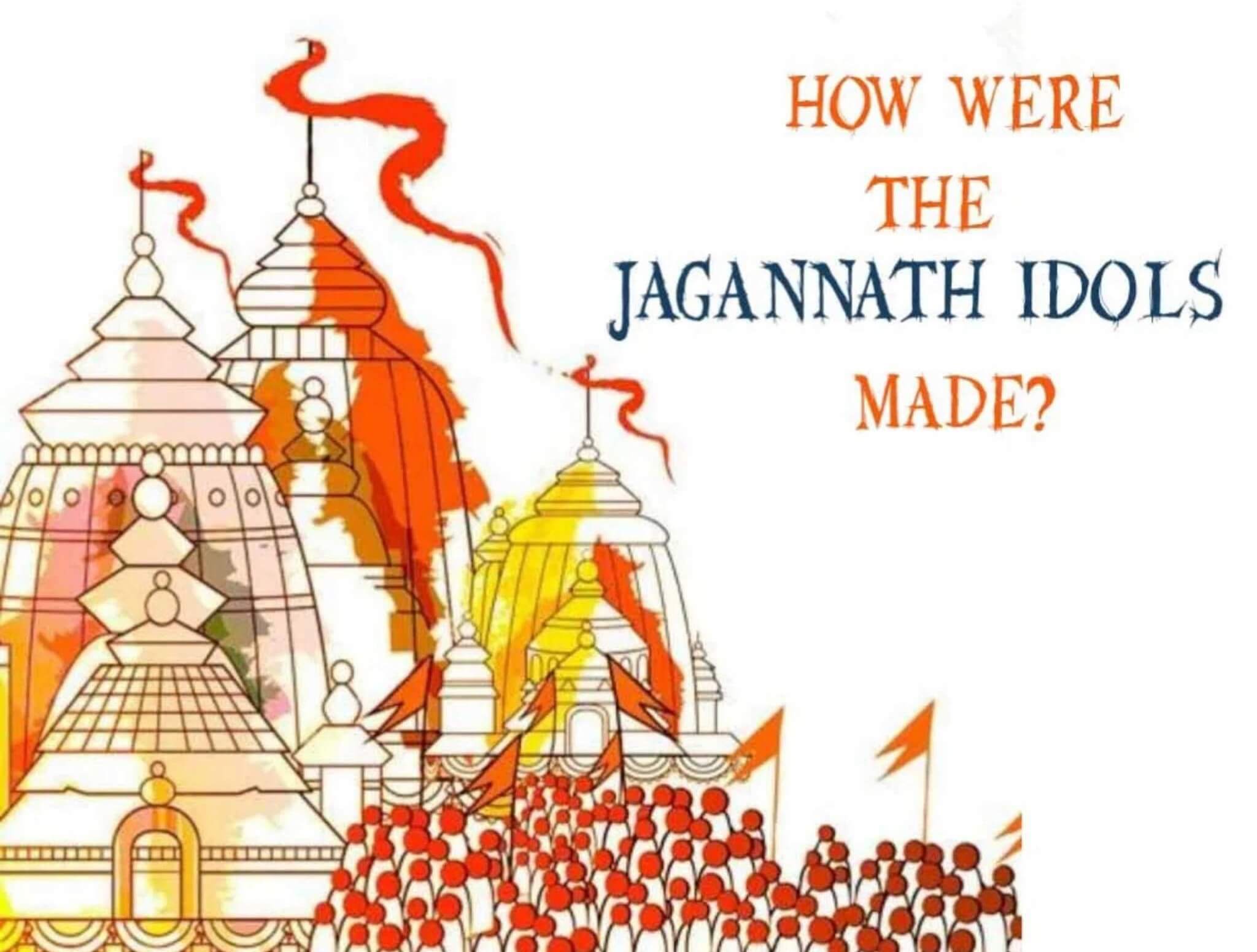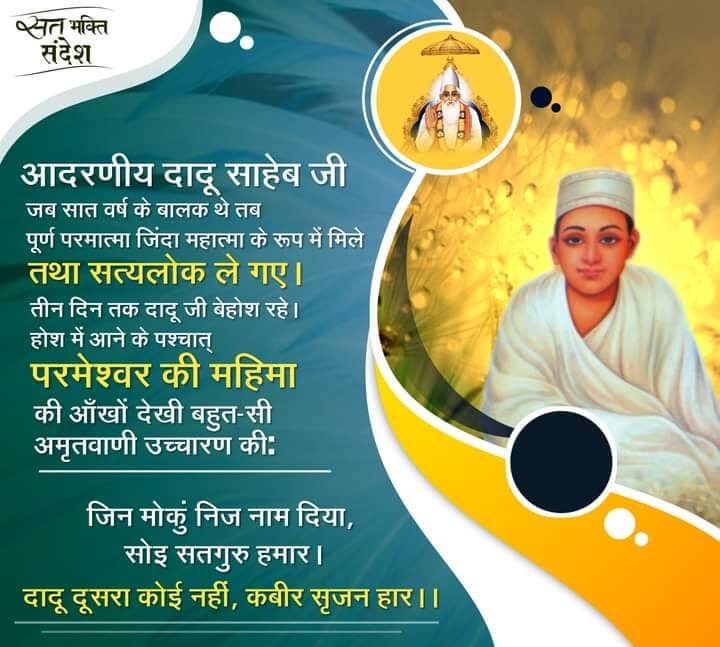Summary of Sumiran Bodh
The 37th chapter of Kabir Sagar, titled Sumiran Bodh, begins on page 1742.
Analysis: It is repeatedly emphasized that misguided Kabir Panthis, influenced by Kaal, have distorted the true knowledge of Kabir Sagar. To restore this authentic wisdom, Almighty Kabir Ji assigned his manifestation, Saint Garibdas Ji (village Chhudani, district Jhajjar, state Haryana).
At the beginning of Sumiran Bodh, there was a description of the original Gayatri, which has been omitted. However, even the remaining content clarifies the truth for us.
The chapter starts on page 1 as Chhota Sumiran Bodh. Although divided into two parts, it is essentially a single discourse, beginning with the verses of Chhota Sumiran Bodh.
Sumiran aadi Gayatri
Aadi Gayatri sumiran saara. Sumiran hans utaare paara.
Koti athaasi ghaat hain. Yam baithe tahan rok. Aadi Gayatri sumirike. Hansa hoy nishok.
Ghaati ghaatin naakhi aage tab jaai. Sakal doot rahe pachhtaai.
Aage makar taar hai dori. Jahaan yam rahe mukh mori.
Oham soham naam ke aage kare piyaan. Ajar lok baasa kare, jag mag dweep sthaan.
Aadi Gayatri sumirike. Aava gaman nashaaya. Satyalok baasa kare. Kah Kabir samjhaay.
Meaning: Ignorant Kabir Panthis have distorted the true knowledge of Kabir Parmeshwar, making it ignorance and creating obstacles in the writing.
As mentioned before, the true knowledge was revealed by Almighty Kabir Ji through his beloved soul, his acquired son via medium of word (Naad sapoot), his disciple Garibdas Ji. Saint Garibdas Ji explained that the Gayatri mantra he imparted is meant for the worship of deities residing in the lotus centers of the body, which are obstructing the soul's path. The paths blocked by these deities are cleared by the Gayatri mantra. This mantra is known as the Brahma Gayatri mantra, according to Saint Garibdas Ji. After this mantra is practiced, all the deities withdraw their obstacles, and even the messengers of Yama no longer hinder the practitioner.
In the Kabir Sagar chapter "Anurag Sagar," there is also evidence of the remembrance of five names.
Verse:
Panch Naam kahi tab dal phera,
Purush naam leeno teen bara.
These five names are part of the Brahma Gayatri mantra, and this knowledge was shared by Saint Garibdas Ji in the chapter "Brahma Bedi," which is described further in the next sections.
Brahm Bedi
The meaning of Brahm Bedi is a well-decorated seat for devotion to the Supreme Being, on which a canopy or moonlight is placed, and a clean and beautiful carpet or mattress is laid, similar to how the seat is prepared for the Sri Sadgranth Sahib during the reading of scriptures. The essence is to create a seat (Bedi) for the Supreme Being in the soul and place God on that throne or seat, praising and venerating Him.
Saint Garibdas Ji's verse:
Verse 1: Gyaan Sagar ati ujaagar, nirvikar niranjan. Brahmgyani mahaadhyani, sat sukrut dukh bhanjan. 1
O Lord! You are the ocean of all knowledge, the embodiment of wisdom. You are most radiant, meaning fully acknowledged. Everyone knows that You are the Supreme Being, the ultimate power. This knowledge about You is clear and evident—You are omnipotent. You are without defects, without any attachment or flaws. You are truly pure and untouched by worldly influences. The term "Niranjan" refers to being free from illusion, unaffected by the world. Even Kaal is referred to as Niranjan, but he is not truly Niranjan in the absolute sense; he is only Jyoti Niranjan. You, O Lord, are the true Brahm Gyani (one who possesses supreme knowledge). You are the only one who reveals the ultimate truth about the Supreme Being, and hence You alone possess Brahm knowledge. Others who claim this knowledge are false. O Lord! You are the greatest meditator, and no one else can meditate like You. You are the true benefactor, the one who brings genuine welfare. You destroy the suffering of Your devotees. (1)
Now, from verses 2 to 8, Sant Garibdas Ji describes the lotuses formed in the human body and also provides the mantras to activate these lotuses. However, the method for chanting these mantras and the permission to give the name lies only with me (Sant Rampal Das). If anyone tries to chant these mantras by simply reading them, they will not gain any benefit.
First, let's look at the illustration of the lotuses formed in the human body:
Verse 2: Mool Chakra Ganesh Basa, Rakt Varn Jahan Jaaniye. Kiliyam Jaap Kulina Taj Sab, Shabd Hamara Maaniye. (2)
Meaning: In the human body, there is a spine, also called the backbone. The lower end of this spine is near the anus. One inch above this, along the spine, is the Mool Chakra (Lotus), which has a red color, like that of blood. This lotus has four petals. The deity Lord Ganesh resides in this lotus. O seeker! To open this lotus, chant the mantra "Kiliyam" and abandon all other worldly and meaningless names. Have faith in our words and accept them. (2)
Verse 3: Swad Chakra Brahmadi Basa, Jahan Savitri Brahma Rahen. Om Jaap Japant Hansa, Gyaan Yog Satguru Kehain. (3)
Meaning: One inch above the Mool Chakra is the Swad Chakra. In this lotus, the deities Savitri and Brahma reside. To develop this lotus, chant the mantra "Om". This secret knowledge was revealed to me by the supreme Lord Kabir through my Satguru, Sant Garibdas. (3)
Verse 4: Naabhi Kamal Mein Vishnu Vishambhar, Jahan Lakshmi Sang Bas Hai. Hariyam Jaap Japant Hansa, Janat Birla Das Hai. (4)
Meaning: The Nabh (Naval) Chakra is located above the stomach, just behind the spine. In this lotus, Lord Vishnu and Goddess Lakshmi reside. To develop this lotus, chant the mantra "Hariyam". This hidden mantra is known only to a true devotee of the Satguru, and only a rare few understand it. (4)
Verse 5: Hriday Kamal Mahadev Dev, Sati Parvati Sang Hai. Soham Jaap Japant Hansa, Gyaan Yog Bhal Rang Hai. (5)
Meaning: The Hriday (Heart) Chakra is located between the chest, near the spine. In this lotus, Lord Mahadev (Shiva) and Goddess Sati (Parvati) reside. To develop this lotus, chant the mantra "Soham". Those who receive true knowledge in the path of Gyaan Yog are blessed, and this practice leads to auspicious outcomes. Immerse yourself in this true knowledge, and it will guide you to success. (5)
Verse 6: Kanth Kamal Mein Basai Avidya, Gyaan Dhyaan Buddhi Naasahi. Leel Chakra Madhya Kaal Karmam, Aavat Dam Kun Phaansahi. (6)
Meaning: At the back of the throat, just above the spine, lies the Kanth (Throat) Lotus. In this lotus resides Avidya (ignorance), represented by Goddess Durga. Under her influence, the knowledge and devotion of the soul are hindered, and the intellect becomes corrupted. This is the Leel Chakra, a lotus with 16 petals, where Kaal Niranjan also resides in a subtle form. Goddess Durga is the wife of Kaal Niranjan. Kaal has vowed to remain hidden, and together they make the devotee forget spiritual knowledge, meditation, and the remembrance of God's name through breath. To activate this lotus, the mantra "Shriyam" should be chanted. (6)
Verse 7: Trikuti Kamal Param Hans Purn, Satguru Samarth Aap Hai. Man Pauna Sam Sindh Melo, Surti Nirti Ka Jaap Hai. (7)
Meaning: The Trikuti Lotus is located at the place between the two eyebrows, where the tika (mark) is applied. Just behind the eyes, this lotus exists, where the complete Supreme Being, in the form of the Satguru, resides. This lotus has two petals—one white and the other black. The mantra "Surti Nirti" is chanted here, which is a practice taught by the Satguru. (7)
Verse 8: Sahans Kamal Dal Bhi Aap Sahib, Jyun Phoolan Madhya Gandh Hai. Poor Rahya Jagdish Yogi, Sat Samarth Nirbandh Hai. (8)
Meaning: The Sahans (Thousand) Lotus is located at the top of the head, slightly toward the back, where some practitioners keep their hair in a knot. This lotus has a thousand petals, hence it is called Sahans Kamal. In this lotus, along with Kaal Niranjan, the formless power of the Supreme Lord also resides. Just as the warmth of the sun is most intense at the equator, this lotus is a special seat of the Supreme Lord. The true Lord, who is all-powerful and free from bondage, is Jagdish. Kaal is bound within 21 universes, whereas the Supreme Truth is the owner of everything. (8)
Verse 9: Meeni Khoj Hanoj Hardam, Ulat Panth Ki Baat Hai. Ila Pingula Sushman Khojo, Chal Hansa Aoughat Ghaat Hai. (9)
Meaning: Just as a fish swims against the current of falling water, a devotee must rise upward to Satlok. For this, seek the Ida (left nostril) and Pingala (right nostril), and the Sushumna (the central energy channel between them). Once found, follow the upward path (Aoughat Ghaat), which is the reversed path. The path of worldly practitioners ends at Trikuti, while the path of saints (the true path) ascends beyond that. This Sushumna channel opens with the chanting of the Satnaam (True Name). (9)
It is written further:
Ohm (Om) Soham Naam Se Aage Kare Pyaan. Ajar Lok Baasa Kare Jagmag Dweep Sthan.
Meaning: This refers to Satnaam (True Name). Satnaam is composed of two mantras: "Om" and "Soham." This mantra should be chanted through the breath (inhale and exhale). By remembering this mantra, the journey continues beyond the Sahans Kamal (Thousand Petal Lotus).
On page 62 (486) of the "Kabir Sagar" chapter "Gyaan Prakash," God Kabir Ji gave the initiation of Satnaam to His devotee Dharamdas Ji, asking him to chant this two-syllable name.
Satguru So Satnaam Lakhave. Satlok Le Hansan Pahuchave. Ohm (Om) Soham Jawan Biru. Dharamdas Son Kehai Kabiru.
Meaning: The true Satguru is one who teaches the Satnaam and, through the Satnaam, leads the soul to Satlok (the eternal abode). The Satnaam consists of the two syllables "Ohm" (Om) and "Soham," which God Kabir Ji revealed to Dharamdas Ji. God Kabir Ji also cautioned that:
Dhari Ho Goy Kahihau Ji Na Kaahi. Naad Susheel Lakhainho Taahi. Sumiran Daya Seva Chit Dharai. Satnaam Gahi Hans Tarai.
Meaning: The name and the sound are powerful. Chanting the Satnaam with full attention (in devotion and service) will lead the devotee to liberation. The Satguru's teachings clarify this process.
On page 63 of the "Gyaan Prakash":
Satnaam Sumiran Karai, Satguru Pad Nij Dhyaan. Atma Pooja Jeev Daya, Lahai So Mukti Aman.
Meaning: Chanting the Satnaam and meditating on the Satguru's teachings purifies the soul. Through self-worship, compassion, and devotion, liberation is attained.
On page 62 of the "Gyaan Prakash":
Purush Naad Sut Shodash Aahi. Naad Putra Shishya Shabd Jo Laihi.
Meaning: The Satnaam practice involves the chanting of the sacred sound "Naad." Just as 16 sons were born from the sound of the divine, those who follow the Guru's teachings become Naad Putras (children of the sound). These Naad Putras are true disciples who absorb the Guru's wisdom.
When a devotee has accumulated sufficient devotion to Satnaam, the "Saar Shabd" (essence of the word) is given. The initiation is completed in three stages, as confirmed in the "Kabir Sagar," chapter "Amar Mool," page 265 (1111):
Dharmdas Main Kahoon Bichari. Jihitain Nibhai Sab Sansari.
Meaning: First, the Guru gives the primary mantra, followed by the Satnaam, and then the Saar Shabd.
Pratham Shishya Hoy Jo Aai. Taa Kehun Paan Dehun Tum Bhai.
Meaning: The first mantra is given to the seeker. Then, the Satnaam is bestowed.
Jab Dekho Tum Dhridta Gyaana. Taa Kehun Kehun (Sat) Shabd Pravaana.
Meaning: When the devotee is steady in knowledge, the Satnaam is then provided.
After this, the Saar Shabd (the essence of divine knowledge) is given, as explained in the following:
Shabd Mahin Jab Nishchay Aave. Taa Kehun Gyaan Agam Sunave.
Meaning: When the devotee reaches a firm understanding, the Guru reveals the deeper spiritual knowledge (the Saar Shabd).
This process is reiterated as follows:
Dharmdas Tum Kehau Sandesha. Jo Jas Jeev Taahi Updesha.
Meaning: The Guru's teachings guide the devotee to spiritual growth. The first mantra is like the Brahm Gayatri (the Gayatri for the Divine Creator), and after receiving it, the devotee is given the Satnaam.
Ja Kehin Sukshma Gyaan Hai Bhai. Taa Kehun Sumaran Dehu Lakhai.
Meaning: When the subtle knowledge is realized, the devotee is instructed to chant the Satnaam.
Gyaan Gamy Ja Kehin Puni Hoee. Saar Shabd Ja Kehin Kahu Soee.
Meaning: With the knowledge gained, the final essence (Saar Shabd) is revealed to the devotee.



